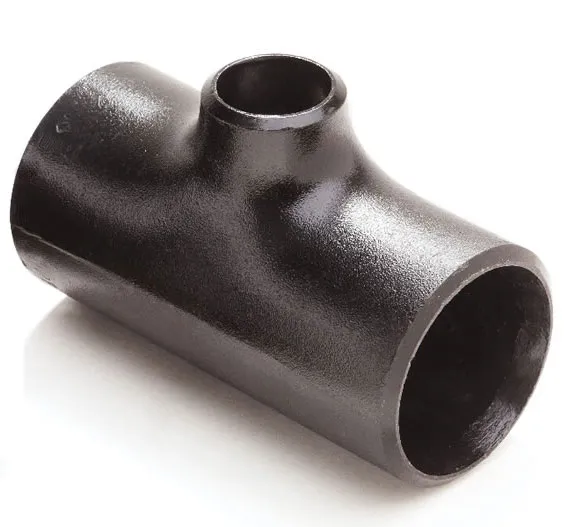-
Cangzhou Yulong Steel Co., Ltd.
-
Phone:
+86 13303177267 -
Email:
admin@ylsteelfittings.com
- English
- Arabic
- Italian
- Spanish
- Portuguese
- German
- kazakh
- Persian
- Greek
- French
- Russian
- Polish
- Thai
- Indonesian
- Vietnamese
- Zulu
- Korean
- Uzbek
- Hindi
- Serbian
- Malay
- Ukrainian
- Gujarati
- Haitian Creole
- hausa
- hawaiian
- Hebrew
- Miao
- Hungarian
- Icelandic
- igbo
- irish
- Japanese
- Javanese
- Kannada
- Khmer
- Rwandese
- Afrikaans
- Albanian
- Amharic
- Armenian
- Azerbaijani
- Basque
- Belarusian
- Bengali
- Bosnian
- Bulgarian
- Catalan
- Cebuano
- China
- China (Taiwan)
- Corsican
- Croatian
- Czech
- Danish
- Esperanto
- Estonian
- Finnish
- Frisian
- Galician
- Georgian
- Kurdish
- Kyrgyz
- Lao
- Latin
- Latvian
- Lithuanian
- Luxembourgish
- Macedonian
- Malgashi
- Malayalam
- Maltese
- Maori
- Marathi
- Mongolian
- Myanmar
- Nepali
- Norwegian
- Norwegian
- Occitan
- Pashto
- Dutch
- Punjabi
- Romanian
- Samoan
- Scottish Gaelic
- Sesotho
- Shona
- Sindhi
- Sinhala
- Slovak
- Slovenian
- Somali
- Sundanese
- Swahili
- Swedish
- Tagalog
- Tajik
- Tamil
- Tatar
- Telugu
- Turkish
- Turkmen
- Urdu
- Uighur
- Welsh
- Bantu
- Yiddish
- Yoruba

Dec . 06, 2024 07:30 Back to list
flange blind plate
Understanding Flange Blind Plates A Comprehensive Guide
Flange blind plates are vital components used in various industrial sectors, particularly in piping and plumbing systems. These plates serve the primary function of closing off the end of a pipe or fitting, ensuring a secure seal and preventing the leakage of fluids or gases. This article will explore the significance, types, applications, and considerations associated with flange blind plates.
What are Flange Blind Plates?
A flange blind plate is essentially a flat, solid piece of material that is designed to be bolted onto the flange of a pipe. It is typically used to block an opening in a piping system, making it a crucial element for maintenance, testing, or alteration of pipelines. The blind plate is characterized by the absence of a central hole, differentiating it from a standard flange, which has a raised opening that allows flow.
Types of Flange Blind Plates
Flange blind plates come in various shapes, sizes, and specifications. The most common materials used for manufacturing these plates include stainless steel, carbon steel, and alloy steel, among others. The choice of material depends on several factors, including the fluid being transported, temperature, pressure, and corrosive properties.
1. Standard Blind Flanges These are the most commonly used type and follow industry standards such as ANSI or ASTM. They are designed to fit specific dimensions and can be readily sourced.
2. Custom Blind Flanges For specialized applications, custom blind plates can be manufactured to meet exact specifications. These might include unusual dimensions or material requirements.
3. Spectacle Blind Flanges These consist of two discs, one of which is a blind plate, while the other is a spacer. Spectacle blinds are often used in systems where the flow direction needs to be changed periodically.
Applications of Flange Blind Plates
Flange blind plates find utility in a variety of applications across multiple industries
- Oil and Gas Industry They are commonly used in upstream and downstream processes to secure line segments during maintenance and repair activities
.flange blind plate

- Chemical Processing In chemical plants, blind plates are critical for isolating sections of piping during cleaning, inspection, or equipment replacement.
- Water Treatment Facilities These facilities rely on blind plates to manage flow and isolate different parts of the system during maintenance.
- Power Generation Power plants use flange blind plates to enable safe maintenance of piping systems that transport steam, water, and other essential fluids.
Key Considerations When Using Flange Blind Plates
When implementing flange blind plates in a piping system, several considerations should be taken into account
1. Pressure and Temperature Ratings Always ensure that the blind plate can withstand the specific pressure and temperature conditions of the application. Mismatched ratings can lead to catastrophic failures.
2. Material Compatibility The material of the blind plate should be compatible with the fluid being transported. For corrosive substances, consider using corrosion-resistant materials.
3. Installation Procedures Proper installation is essential to avoid leaks. Follow industry-standard practices and guidelines to ensure that the blind plate is correctly bolted and sealed to the flange.
4. Regular Inspections Periodic inspections of the blind plates and their seals can help in identifying wear or damage that could lead to leaks.
5. Safety Standards Compliance with safety regulations and industry standards is crucial while using flange blind plates, especially in high-pressure systems.
Conclusion
Flange blind plates are indispensable in the realm of piping systems, providing safety, reliability, and versatility. They enable the seamless operation of various industrial processes by facilitating easy isolation and maintenance of pipeline sections. Understanding the types, applications, and installation considerations of flange blind plates ensures that your piping systems operate efficiently and safely. Whether in oil and gas, chemicals, or power generation, these components play a pivotal role in maintaining system integrity and operational efficiency.
Latest news
-
ANSI 150P SS304 SO FLANGE
NewsFeb.14,2025
-
ASTM A333GR6 STEEL PIPE
NewsJan.20,2025
-
ANSI B16.5 WELDING NECK FLANGE
NewsJan.15,2026
-
ANSI B16.5 SLIP-ON FLANGE
NewsApr.19,2024
-
SABS 1123 FLANGE
NewsJan.15,2025
-
DIN86044 PLATE FLANGE
NewsApr.19,2024
-
DIN2527 BLIND FLANGE
NewsApr.12,2024
-
JIS B2311 Butt-Welding Fittings LR/SR 45°/90° /180°Seamless/Weld
NewsApr.23,2024











